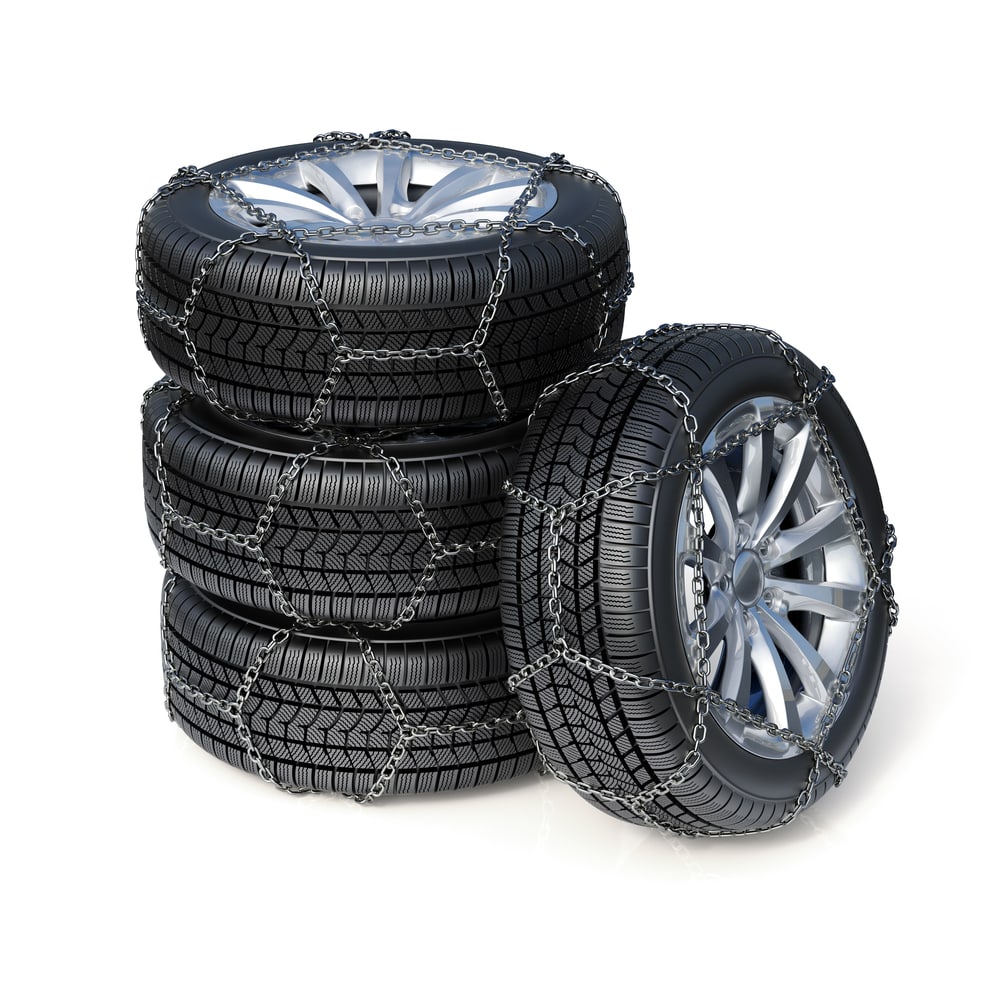

Snow tires are made to grip on wet, snowy roads. Snow tires are also made of higher quality than regular all-season tires. Snow chains go over the tires of the vehicle to provide more traction while driving through snow and ice. Snow chains are sold in pairs, and must match the tire diameter and tread width.
When to Use Snow Chains
Snow chains should be used when there is a good layer of ice or compact snow on the road. If there is not enough snow or ice, snow chains can damage the road or vehicle. If your vehicle is front wheel drive, the snow chains should be placed on the front wheels. If the vehicle is rear wheel drive, the chains should be on the rear wheels. If the vehicle is four wheel drive, snow chains should be placed on all four wheels.
When to Use Snow Tires
Snow tires are best used in places when the yearly snowfall is around 350 inches. Even if you do not get 350 inches of snow a year, if you get some snow, rainfall, and ice in the winter time, having snow tires will make your driving experience safer and more enjoyable. They help with emergency stopping even on dry pavement. Edmunds.com recommends purchasing snow tires if the temperature drops below 40 degrees Fahrenheit. This is because the rubber on winter tires is designed to stay pliable at cold temperatures.
Classes of Snow Chains
The Society of Automotive Engineers (SAE) has three classes of snow chains based on the clearance of the vehicle. Class S has a minimum tread-face clearance of 1.46 inches, and a minimum side-wall clearance of .59 inches. Class U has a minimum tread-face clearance of 1.97 inches, and a minimum side-wall clearance of .91 inches. Class W has a minimum tread-face clearance of 2.50 inches, and a minimum side-wall clearance of 1.50 inches. Consult the owner’s manual for the correct type of snow chains for the make and model of your vehicle.
Snow tires can make winter driving safer and easier, but you still need to take care while driving on snowy, wet roads. Snow chains can be used in certain cases where the snow and ice is really compact.



